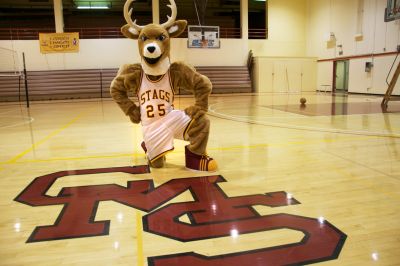
The mascot-a Gaucho named “Ole”-is fashioned after an Argentinian or Uruguayan version of the North American cowboy, who are renowned in the folklore and literature of those cultures. The Gauchos offer 20 men’s and women’s Division I sports programs and have won national titles in men’s soccer and water polo. Located in Goleta, eight miles north of Santa Barbara and 100 miles northwest of Los Angeles, UCSB boasts an undergraduate population of just over 20,000. Peter the Anteater was crowned “Best of the Best” in Mashable’s Mascot Madness contest during the 2015 NCAA men’s basketball tournament and a small, stuffed Peter accompanied astronaut Tracy Caldwell on the space shuttle Endeavor mission STS-118 in August 2007.Įstablished in 1891 as a small, independent teacher’s college, Santa Barbara joined the renowned University of California system-one of the eight original “Public Ivies”–in 1944. The Anteaters have won 28 national championships in nine different sports and 53 Anteaters have competed in the Olympics. Alumni include comedian Jon Lovitz, diver Greg Louganis and miler Steve Scott. With over 25,000 undergraduate students, UCI competes in 18 men’s and women’s NCAA Division I sports as members of the Big West Conference. Fans are known as ‘Eater Nation and its most enthusiastic members are part of the Antourage. Original and slightly irrelevant, “Peter the Anteater” has now been UC-Irvine’s mascot for over half a century. On November 30, 1965, “Anteater” carried 56 percent of the student body vote to become the official mascot, finishing just ahead of “None of the Above” in the balloting. As fans of the comic strip BC, which featured an anteater who cried “ZOT!” when he ate ants, the long-nosed, bushy tailed mammal seemed a natural choice. Unimpressed with any of those recommendations, water polo players Pat Glasgow and Bob Ernst proposed the Anteater. University administrators suggested Unicorns, Bison, Centaurs and Toros. Founded in 1965, one of the student body’s first tasks was selecting a mascot. UC-Irvine is located in the heart of Southern California’s Orange County. Today we learn more about the Anteaters, Gauchos, Tritons and Banana Slugs. Each of the schools’ motto is “Let There Be Light.” While many of the organization’s sports teams have conventional nicknames like Bruins, Bears, and Aggies, four of UC’s member institutions have some of the most enlightened mascots in college athletics.
#Scripps college mascot professional
The liberal arts traditions of The Claremont Colleges, as well as the professional programs of Claremont Graduate University, assure that KGI can effectively engage the many ethical, societal, and policy issues that arise with the evolving technology of the life sciences.The University of California system has ten campuses located throughout the Golden State. KGI also interacts, both formally and informally, with the Rancho Santa Ana Botanic Garden’s graduate program in botany, with the strong applied mathematics programs at Claremont Graduate University and Harvey Mudd College, and with the well-recognized undergraduate science programs across all of Claremont’s undergraduate colleges. In addition, a joint degree program with Claremont McKenna College in applied biology offers students majoring in a natural science the opportunity to attend a liberal arts college for three years and then to complete KGI’s MBS program in two additional years. Connections with the Drucker Graduate School of Management provide opportunities for additional coursework that addresses management, policy, and economic issues. Students can participate in a broad array of available courses offered by consortium members. KGI’s students and faculty have access to a top-quality library, equivalent to those of the nation’s research universities. Much of KGI’s support infrastructure is obtained through The Claremont Colleges central programs and services. Two of these, Claremont McKenna and Harvey Mudd Colleges, are the only two colleges founded after World War II ranked among the top undergraduate colleges in the country.

Scripps College was founded in 1926, Claremont McKenna College in 1946, Harvey Mudd College in 1955, and Pitzer College in 1963. The Claremont consortium was begun by Pomona College in 1925 with the establishment of The Claremont Colleges Services (formerly known as the Claremont University Consortium), the purchase of a large parcel of land for future institutions, and the founding of the Claremont Graduate University. A group of seven private, highly selective, independent institutions which share a wide range of central facilities and services, The Claremont Colleges have a structure and organization unique in American higher education. KGI derives immeasurable benefits from its membership in The Claremont Colleges.


 0 kommentar(er)
0 kommentar(er)
